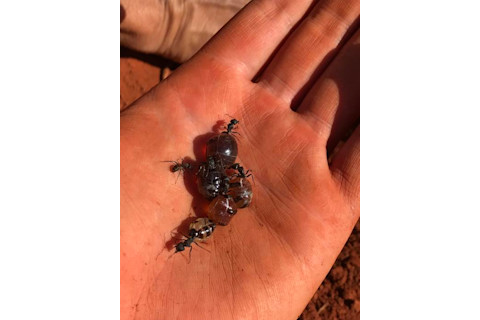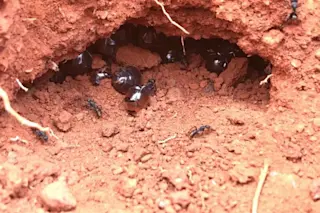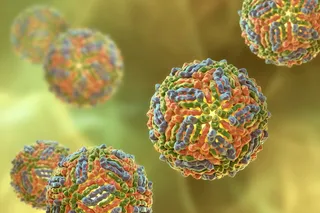Honey from the Australian honeypot ant (Camponotus inflatus) may have medicinal properties that fight infection. While this has been known among Australia’s indigenous peoples for thousands of years, Western science has now formally studied the organic substance’s antimicrobial properties in a recent study published in PeerJ.
The interest in using honey as an antimicrobial treatment in modern medicine has skyrocketed with recent increases in antimicrobial resistance. Other studies have found that honey from honeybees can inhibit 60 species of bacteria, some fungi and some viruses.
But honey from the ballooning ants has a different mechanism to treat ailments. “This discovery means that honeypot ant honey could contain compounds with substantial antimicrobial power; identifying these could provide us with starting points for developing new and different types of antibiotics,” said Kenya Fernandes, a microbiologist and study author at the University of Sydney, in a statement.
Medicinal Use of Honey
There's evidence of humans first using honey about 8,000 years ago in Stone Age paintings. Ancient civilizations, like the Egyptians, Romans, Chinese, Assyrians, Greeks and Romans, have used honey as a remedy against health ailments for thousands of years. Honey was used to treat wounds and gut diseases. In ancient Egypt and Mesopotamia, honey was also used as a contraceptive when mixed with acacia leaves and lint.
For the Tjupan people, ant honey is used to treat sore throats and infections and a way to bond with the community.
“For our people, honey ants are more than just a food source. Digging for them is a very enjoyable way of life and a way of bringing the family together,” said Danny Ulrich, an affiliate of the Tjupan language group who leads foraging tours for honeypot ants in Kalgoorlie, Australia, in a statement. “Our people have been enjoying sweet honey ants for thousands of years.”
The honey’s medicinal value to the region's indigenous people intrigued Andrew Dong, study lead author and food scientist at the University of Sydney, so he decided to study the insects for any antimicrobial characteristics.
A Living Food Pantry
Among the ant colony, a class of workers gorge themselves with nectar and sugary substances that other ants bring. The intake of sweet stuff causes the ants to bloat and have a translucent gusher-like appearance.
The swollen ants are immobile and become a dispensing machine for their colony and regurgitate the stored honey when other foods become scarce. Called ‘repletes,’ the ants are found dangling like ornaments at the top of their nests. They wait for the colonies' worker ants to communicate with them through their antennae to let the repletes know it's time to dispense the stored provisions.

(Credit: Danny Ulrich)
Danny Ulrich
For the study, the ants were collected in the Goldfields-Esperance region in western Australia with the help of Ulrich. Researchers waited nearby a mulga tree for a worker ant to walk by and then followed it to the nest. Ants were humanely euthanized and then harvested for their honey.
When compared to other kinds of honey, like Manuka and jarrah, which are produced by honeybees, scientists found honey from honeypot ants has different antimicrobial and chemical properties. This suggests that ant honey has unique microbial action and characteristics.
Laboratory tests found that the ant honey could resist Staphylococcus aureus bacteria but no other types of microbes. The honey also had strong non-peroxide activity against the fungi, Cryptococcus and Aspergillus. Both of these types of fungi are commonly found in soils and honeypot ants may have evolved a resistance towards it to prevent colonies against a fungal invasion. In humans, fungal infections of these types can cause serious illness in people with suppressed immune systems.
“This study demonstrates that honeypot ant honey has unique antimicrobial characteristics that validate its therapeutic use by Indigenous peoples,” said Dee Carter, a microbiologist and study author at the University of Sydney in a statement. “Taking something that has been honed by evolution to work in nature and then applying this to human health is a great way to come up with therapeutic strategies.”
Read More: How Army Ants Build City-Like Nests Using Their Own Bodies














